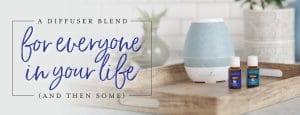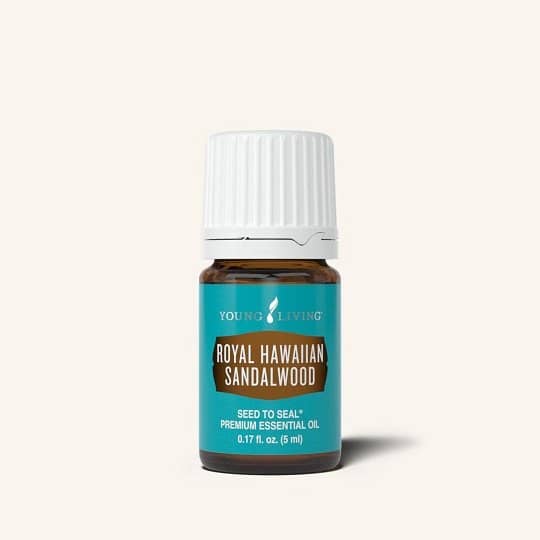Royal Hawaiian Sandalwood™ Essential Oil
Royal Hawaiian Sandalwood™ essential oil has a grounding, velvety wood aroma and helps promote the appearance of youthful, glowing skin when applied topically. A product of the Kona Sandalwood Reforestation Project located in Hawaii, Young Living’s Royal Hawaiian Sandalwood is obtained only from dead or dying sandalwood trees to preserve the ecological balance and maintain respect for the sacred land. Harvesting occurs when a tree reaches the end of its natural life, which also happens to be when the highest percentage of oil is found. Royal Hawaiian Sandalwood has a smooth, velvety wood aroma and provides several skin care benefits when applied topically as part of your beauty routine.
Product Profile
-
Has a nurturing, velvety wood aroma
-
Smooths the appearance of skin and reduces the appearance of blemishes when applied topically
-
Helps create a tranquil, grounding environment when enjoyed aromatically
-
Makes a great aromatic companion to your yoga, meditation, or spiritual practices
Product Use & Tips
Suggestions from Young Living
-
Topical: Apply 2–4 drops directly to the desired area. Dilution is not required, except for the most sensitive skin. Use as needed.
-
Aromatic: Diffuse up to 1 hour 3 times daily.
-
Add it to your daily moisturizer to help reduce the appearance of blemishes and to promote the appearance of younger-looking skin.
-
Apply it to your shoulders and the back of your neck to unwind after a long day.
-
Diffuse it at home for a spa-like environment that is grounding and soothing to the senses.
-
Apply it to your wrists for a peaceful companion during meditation.
-
Add a couple of drops on a cotton ball and place it in your car’s vent to inspire a relaxing environment when you’re caught in traffic.
Related to this Product

100 Years of Diffuser Blends: A Blend for Each Decade

20 Essential Oils Practically Made for Summer

5 Stages of Running out of your Favorite Essential Oil

50 Diffuser Blends for 50 States

7 Reasons to Have a Crush on Jasmine Essential Oil

A Diffuser Blend for Everyone in Your Life (and then some)

An Essential Oil User’s Guide to Aromatherapy

Back to School – Diffuser Blends for Focus

Beach Bonfire Diffuser Blend

Bring Serene Scents Home with 5 Spa-Inspired Diffuser Blends
Diffusing Notes
These are approximate drops. Adjust recipes to your needs. If a recipe is too strong for you, add fewer drops. Do you need more? Just add more, but no more than 8-12 drops for all of our diffusers with the exception of the Aria diffuser which requires 15-25 drops.
Tip: When you first begin diffusing, start with less essential oil than listed in the recipes and build to more as desired. You should give your body time to adjust to the essential oils. Almost all the Young Living diffusers are ultrasonic which provides a cool-mist humidifier along with the essential oils. These diffusers are safe to run all day. Pay attention to the size of the room because the size will impact the intensity of diffusing. Nebulizers and atomizers are different than ultrasonic diffusers because they do not use water. For these, note the time limit for diffusing stated on each individual oil bottle.
Ultrasonic Diffusers
Ultrasonic diffusers work by using vibrations to break down water and essential oils into tiny particles, creating a fine mist that is released into the air. Inside the diffuser, there’s a small disc that vibrates rapidly, usually at ultrasonic frequencies (beyond what humans can hear). This vibration agitates the water and oil mixture, breaking it into micro-droplets that are then dispersed as a mist. This mist carries the pleasant aroma of the essential oils and tiny water particles, helping to humidify the air and spread the fragrance throughout a room. Ultrasonic diffusers are popular for their ease of use, quiet operation, and ability to provide both aromatherapy benefits and a visually appealing ambiance.
Cleaning Your Diffuser
- Always turn off and unplug the diffuser prior to cleaning.
- To ensure proper performance, clean the ultrasonic plate and lid after each use.
- If essential oil begins to build up on the ultrasonic plate, gently wipe it off using a cotton swab dipped in rubbing alcohol.
- If essential oil begins to build up on the lid, gently wipe it off using mild soap and water only.
- Never use a corrosive detergent to clean the ultrasonic plate or damage will occur.
- Periodically check under the diffuser to keep the fan intake free of debris.
- Debris can be removed by blowing on the fan intake opening or wiping with a clean, dry cloth. (Do not use aerosol sprays, solvents, or abrasives to clean the plastic housing.)
- When not in use, clean the diffuser and store dry. Replacement ultrasonic plates can be purchased from Young Living.
Aromatherapy
When odorant molecules attach to odorant receptors, your body responds by sending electrical impulses into your brain. This causes different physiological reactions depending on the aromas detected.
The sense of smell has a profound impact on your emotions and inner desires. Those scents can set the mood or bring up memories before you are even aware of it.
Aromas impact your body and they can set the mood and atmosphere in any environment.
The sense of smell is directly connected to the limbic lobe of your brain, also known as the emotional control center. The limbic lobe plays a big role in your mood, memory, behavior, feelings, and emotions, and it is connected to the olfactory bulb in the nose.
How to Use Essential Oils
Aromatically, Topically, Internally & Safely
You just purchased a bundle, kit, or collection of essential oils. Now you’re overwhelmed by how to use them. We’ve all been intimidated by how to use essential oils. With a little practice and this simple guide, you’ll be an expert in no time.
This video covers how to use essential oils:
• Aromatically
• Topically
• Internally
• Safely
How to Apply Essential Oils - Three Main Methods
Stumped on how to apply your essential oils? How you apply an oil depends on what benefit you want to get out of it. Different oils offer different benefits, depending on how and where you apply them. So, before using any new essential oil, be sure to check that oil’s uses and benefits and read any labels and instructions that come with it. If you have questions or concerns, check with your healthcare provider.
Using Essential Oils Aromatically
Let’s start with the hallmark way to use essential oils: aromatically. All essential oils feature a signature aroma you can smell and inhale for various effects. One oil’s crisp scent can invigorate you when you need a midday pick-me-up. Another’s soothing aroma can help you unwind after a tough day. You can use essential oils aromatically by simply opening the bottle and inhaling its aroma. They can also be applied topically as a personal fragrance, but always dilute them with a carrier oil, which is a plant-derived oil like coconut or almond oil. Dilute a few drops of essential oil with your carrier oil and then rub it into your palms and inhale or dab some behind your ear or on your neck. You can also use a diffuser to disperse the essential oil into the air.
Using Essential Oils Topically
Another favourite way to apply essential oils is topically, where you allow the oil to absorb into your skin. As mentioned before, always dilute oils with a carrier oil before you apply them topically. Topical oils can become part of a massage or added to your preferred lotion, moisturizer or other personal care product. Some oils, particularly those from the citrus family, can cause photosensitivity. A carrier oil is a plant-derived oil like coconut and almond oil that can be used to dilute an essential oil’s concentration.
Using Essential Oils Internally
If you think an oil smells terrific, wait until you taste it! You can season your favourite dish or flavor a drink with certain grades of essential oils. Ingesting oils lets you savor all their savory, herbaceous, spicy, fruity potential. The simplest ways to take essential oils internally is to add them to a glass of water, take them in a capsule or use them as seasoning. Start off with a small amount. A little goes a long way, and even a single drop might overpower your recipe. One recommendation is to dip a toothpick in the oil and stir that little bit in as a starting point. Of course, before you use any oils internally, make sure the oil is safe to ingest. Unless it specifically says on the label that it’s safe for ingestion, assume it’s safe for external use only.
Diffusing Blends with These Oils
Related Areas

Can essential oils expire? Understanding essential oil oxidation

Why Patents Matter to Essential Oils

How to Store Essential Oils: Get the Most Out of Each Drop

What are “hot” Oils and How Can I Use Them?

Why Should You Put Essential Oils on Your Feet?

The Science Behind Aromatherapy

Which Type of Diffuser is Right for You?

The Story Behind Essential Oil Prices
* The statements and information regarding these products have not been evaluated by the FDA. Young Living products are not intended to diagnose, treat, cure, or prevent disease. Most of the product information describing Young Living products is directly from Young Living Essential Oils, LC, and can be found online at YoungLiving.com
See more about toxins in your home.








